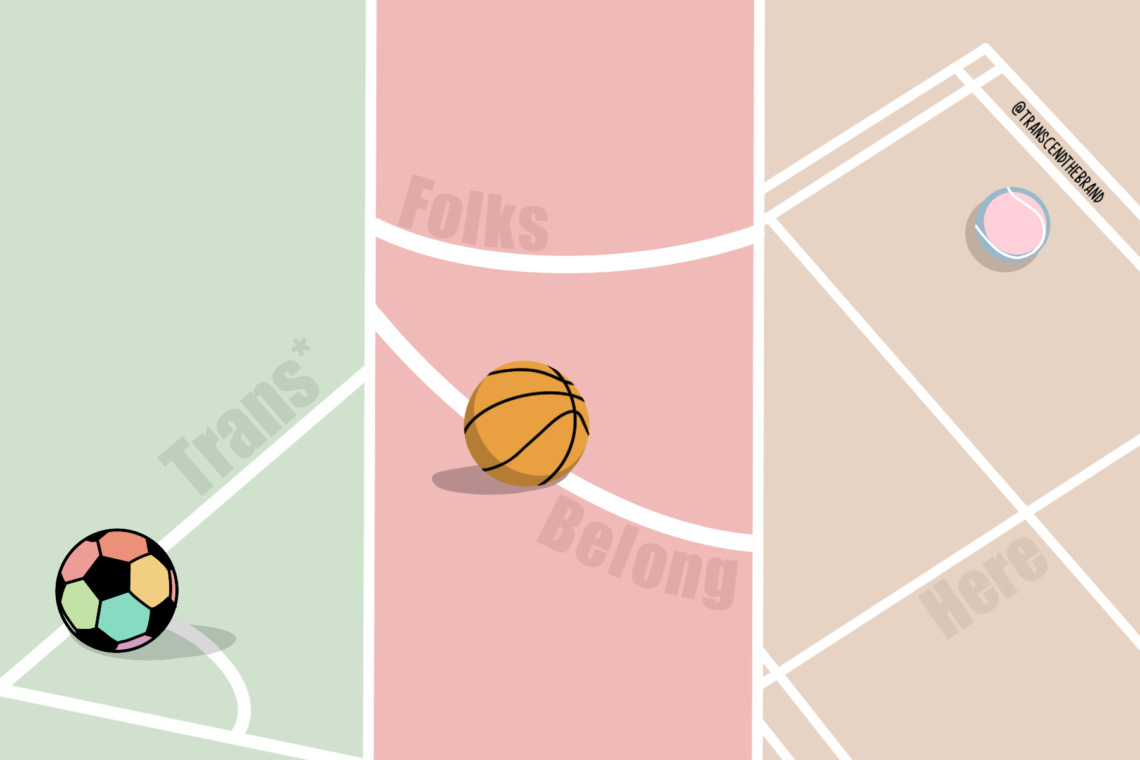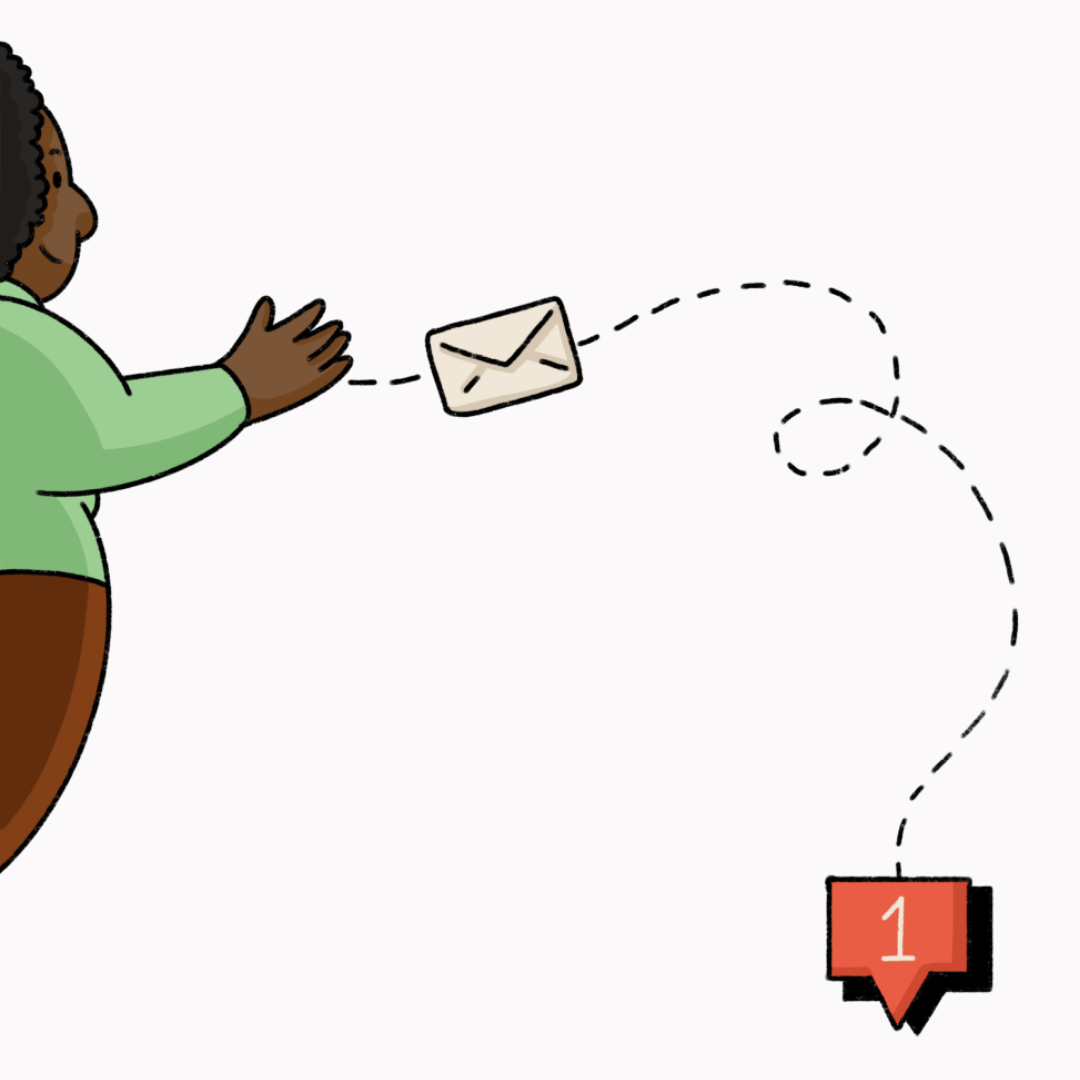Written by: Miles Llewellyn (they/them).
Edited by: Milo Misseri (they/them).
Physical activity has been an essential part of my life since I was a kid. Growing up I was a generally active youth and grew up playing soccer, badminton, basketball, and volleyball. Sports were a central part of my identity. They allowed me to challenge myself, find community, and forget about everything else. I was lucky– lucky in the sense that I felt welcome, as though I belonged in that space. Lucky that I didn’t avoid sports or other forms of physical activity because of how I looked or who I was. Quite frankly, it was where I felt I most belonged .
In hindsight, being athletic also played an important role in my gender exploration . Being viewed as someone who was sporty allowed me to evade gender expectations. Even though I was less feminine, my presentation was completely within the realm of what was considered acceptable because I fit the athletic tomboy style. Sports had created an oasis that I didn’t even realize I had been searching for. When I reached university, my understanding of self shifted. I was no longer an athlete and was deeply struggling to figure out who I was without that identity. For me, the concept of gender identity didn’t enter my world until late in my undergraduate degree, and even still, I didn’t see myself as trans because I had a very binary idea of what it meant. I simply didn’t have the language to express how I felt as someone who inhabited a space outside of the binary.
Once I began to understand my gender identity, I started taking the steps I felt necessary to align my gender presentation with who I knew myself to be. By this time, I was well out of organized sport, and I look back upon this as fortunate timing because I wasn’t forced to choose between gender and sports. For many people, these two things are irreconcilable because the sports world is a highly gendered arena. Being able to participate (or feel welcome) in sport might mean that you cannot pursue transition (whether that be socially, medically, or surgically) in the way you may wish to. For example, a trans-feminine individual will most likely encounter huge barriers in relation to participating in women’s leagues. Regulations surrounding the amount of time spent on gender affirming hormones and maintaining certain levels of testosterone are two common rules faced in sport. On top of this, finding a team that is accepting and supportive is incredibly difficult. It is unsurprising that many folks avoid sports out of fear, discomfort, and alienation.
The challenges of being trans and/or nonbinary while participating in sport can feel overwhelming, exhausting, and emotionally taxing.
In my life, I now seek out physical activity within the setting of a gym. I’m (to my knowledge) the only trans person there, but I wasn’t the first, which makes it a bit easier. However, there are sacrifices that I’m forced to make in order to go to the gym. Although I pay the same fee as every other member, I don’t have access to washrooms, showers, or a place to store my belongings (in the same way that others do in a locker room). I come to each class fully clothed, I time my hydration and bathroom schedule, and I leave each class drenched in sweat but unable to change into clean clothes before leaving, which also means that I need to go home to shower before continuing with my day. These are inconveniences that I currently tolerate because I feel as though exercise is a necessity in my daily routine and choices are limited. Nevertheless, the expectation that trans and gender non-conforming folks put up with this lack of access is inappropriate and creates huge barriers for the community in accessing spaces for physical activity, whether that be a gym, yoga studio, or sporting complex.
I’m content with my current fitness modalities, but every so often a recreational sport or activity is brought up and I silently lament the fact that I do not belong, as these spaces are gendered and I truly don’t know which category I “fit” into. Going with the men makes me feel inadequate, while going with the women makes me dysphoric¹. I also fear being accused of having an unfair advantage for being on hormones. Either way, I feel ostracized, exposed, embarrassed and vulnerable. Even the “co-ed” leagues typically have rules, such as each team having a certain number of females on the field/court at all times. Further, I don’t “pass” as a binary gender. Within the course of a day, I could be gendered as a cis male, cis female, and any shade of trans, which creates an uncomfortable dynamic when I step into areas that are highly gendered. Not knowing how I will be read or how people react to my presence creates a huge degree of anxiety– in part because I worry about people judging me, and in part because peoples’ expectations of your body vary depending on how you’re perceived. For example, if a stranger reads a trans-masculine person as cis male, but their level of strength doesn’t meet the stranger’s expectation of an ‘average’ cis male, then they might be seen as weak or lacking in fitness. For myself, I used to be considered a relatively strong female, but now am often viewed (or fear being viewed) as a weak male. The challenges of being trans and/or nonbinary while participating in sport can feel overwhelming, exhausting, and emotionally taxing, as there is significant internal conflict surrounding the dynamics of gender in these spaces.
There is power to be found in physical activity and I am so grateful to be able to access it.
For me, physical activity is a method of affirming my gender and allows me to feel strong, confident, and capable. It is proof that I can overcome the seemingly impossible, and I carry this into my everyday life. There is power to be found in physical activity and I am so grateful to be able to access it. This is my experience as a nonbinary individual, and it is important to note that the experiences of trans women and men will vary, just as the experiences of other gender diverse folks will too. Further, all of us hold a multitude of identities, and the intersectional nature of this cannot be overlooked. Queer people can be disabled and/or chronically ill, which will almost certainly impact their access to physical activity.
After sharing my own personal experiences with gender, sport, and physical activity, I turn to you as healthcare and wellness professionals. There could be an entire series on the various aspects of gender and physical activity, but here are a few points that I hope you can take away, some of which I touched on in my personal narrative, and others that I didn’t have the time to delve into.
1. The healthcare and wellness industries often assume that you can easily access services that facilitate active lifestyles, but in the case of many trans and gender diverse folks things aren’t so simple. Bathrooms, locker rooms, lack of awareness of gender diversity of others, and dysphoria can all be roadblocks.
2. Along with the intricacies of entering gendered spaces, there are a multitude of social determinants of health that disproportionately impact trans and gender nonconforming individuals which may play a part in their ability to participate in sport or other forms of physical activity.
3. Tuning into someone’s reasons for becoming active can help to assist them in getting the most out of their participation (as is the case for any person, regardless of gender). Gender dysphoria may or may not influence one’s decision to exercise. For some, putting on workout clothes and moving their body will increase their dysphoria, while others might find it to be a method of stress relief and coping. Some folks’ goals will be to gain muscle, while others may fear the same. Some will be there simply to get in a good sweat. *It is important to note that it is up to the individual to share this with you– do not expect them to feel comfortable sharing personal information about dysphoria.*
4. Some folks wear gender affirming items such as binders (chest compressor for a flatter appearance) and gaffs (compression underwear to decrease bulge) or use taping methods, all of which can impact their ability to participate in physical activity as they can cause physical discomfort, decreased ability to breathe, skin abrasion, and reduced blood flow to the area. Physical activity might increase the chances of injury when binding, tucking, or taping. For more information:
Tucking: https://www.prideinpractice.org/articles/transgender-genital-tucking-guide/
5. Many people are no longer able to access the same methods of physical activity after they’ve begun transitioning because sporting spaces are heavily gendered. A few examples include the name of the league (e.g. men’s league), the language used when referencing players (e.g. ladies), uniforms, and differences in rules and regulations of the game (net height, different sized implement, presence/absence of checking) to name a few.
6. Places such as gyms, sports fields, and locker rooms are often riddled with toxic masculinity and cisheterosexism. This environment is extremely unwelcoming and unsafe for trans and gender diverse individuals. I cannot emphasize enough that the culture of the space speaks volumes.
Healthcare and wellness professionals must take the unique experiences of trans and gender nonconforming folks into consideration when recommending and promoting physical activity and avoid shaming/blaming if it isn’t something the patient/client is comfortable with. Every day I experience the benefits of physical activity, and I want that opportunity to be there for all. Not just those who fit the binary. Not just those who meet your expectations for their body. We don’t want to have to fight for space to feel comfortable. Let’s ensure that all identities are taken into account when creating spaces of physical activity and wellness.
¹Gender Dysphoria is “distress caused by a discrepancy between a person’s gender identity and that person’s sex assigned at birth (and the associated gender role and/or primary and secondary sex characteristics” http://www.phsa.ca/transgender/Documents/Glossary%20of%20Terms%20-%203%20sources.pdf



